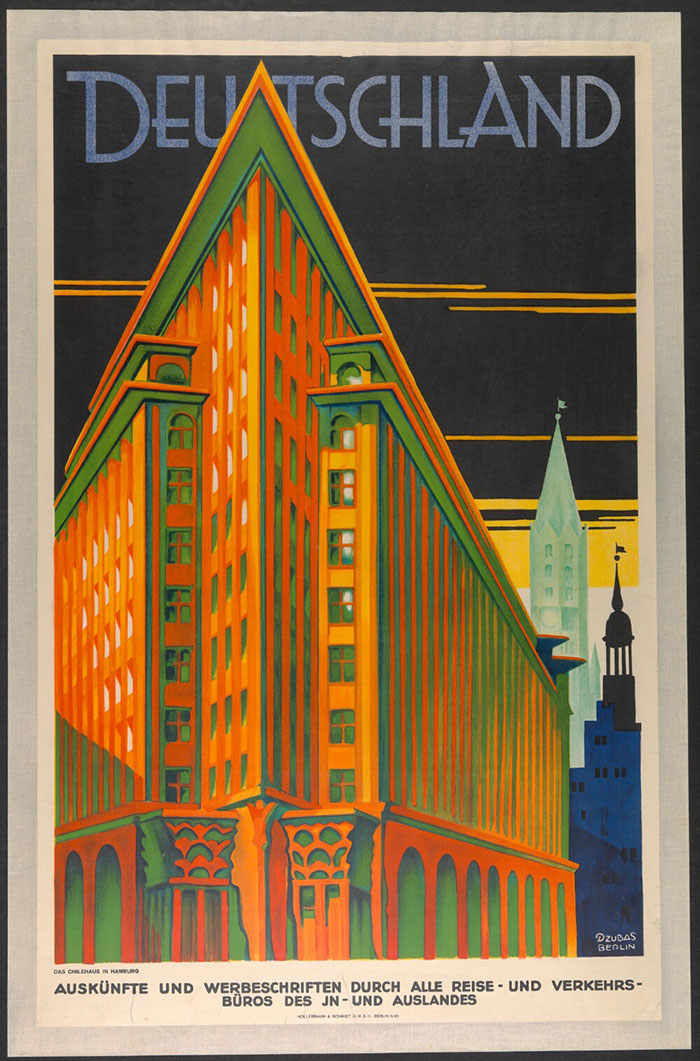My proposal for my 3-country Fulbright to Germany, Chile and Hong Kong connects early 20th century buildings and their PR materials across national boundaries. Sometimes my process involves leafing through old magazines and newspapers. Other times, giving tours of the buildings and their surroundings. And on ideal days, like today, studio production, inspired by this research.
So to refocus before a studio day, a little bit more about the Chilehaus, my main muse (along with the port) here in Hamburg. Below is an excerpt from my proposal, explaining the connection.
Placed on UNESCO’s list of World Heritage Sites in 2015, the Chilehaus is a compelling, early example of infrastructure born out of the profits from international trade. Designed in the shape of a ship, the building cost a small fortune during Germany’s period of hyperinflation in the 1920s. Funded by shipping magnate Henry B. Sloman, Chilehaus developed from Sloman’s wealth amassed through his trading of potassium nitrate mined in Chile, hence the name Chile House. The Global Flex will allow me to investigate related public relation posters on both ends of the exchange, through examination of promotional materials about the Chilehaus at the University of Hamburg and the mining of potassium nitrate in Chile at the National Archive of Chile. The posters from both locations during this era display a national boosterism common in artwork from the Soviet Socialist Realist era.
 |
Willy Dzubas. Deutschland : das Chilehaus in Hamburg. Published by Berlin : Hollebraum und Schmidt, [1919-1945].
|
And later in my proposal:
Since my recent artwork remixes color and architecture as ways to manufacture desire, this research on posters will be combined with investigations into the history of urban planning in Hamburg. The warping architecture in my artwork from the last ten years connects to both Chilehaus’ location in the Speicherstadt and Kontorhaus District, with its series of complex tunnels, canals, and warehouses, and the Chilehaus itself, with its sharp peak at its front that mimics a ship’s prow. These oblique structures, evident in Höger’s 1924 building and often celebrated in contemporary, computational architecture, mimic the both the intentionally obtuse structures of contemporary networked systems and the structure of the sea itself. Geographer Phil Steinberg writes that linear, descriptive narratives are inadequate for portraying trade, which is a process of betweeness even as it incorporates tangible objects, actors, and power dynamics. Furthermore, he argues that linear narratives are unable to capture either the social or the geophysical power of the ocean, which has a depth and dynamism that defies representation, or of the ports that exist in constant interchange between ideals of solid land and liquid sea. In keeping with this critique, I seek to produce artworks with structures that reflects this liminal state—between representation and abstraction, male and female, analog and digital—through paintings that suggest movement and short animations in motion.

No comments:
Post a Comment